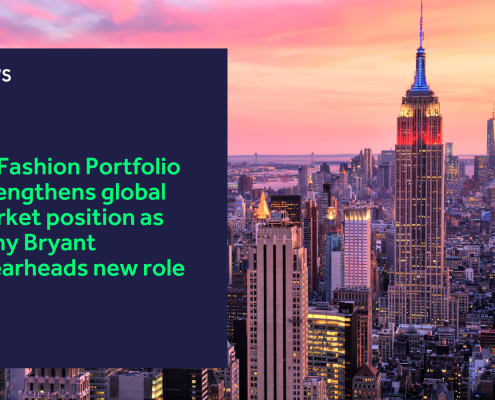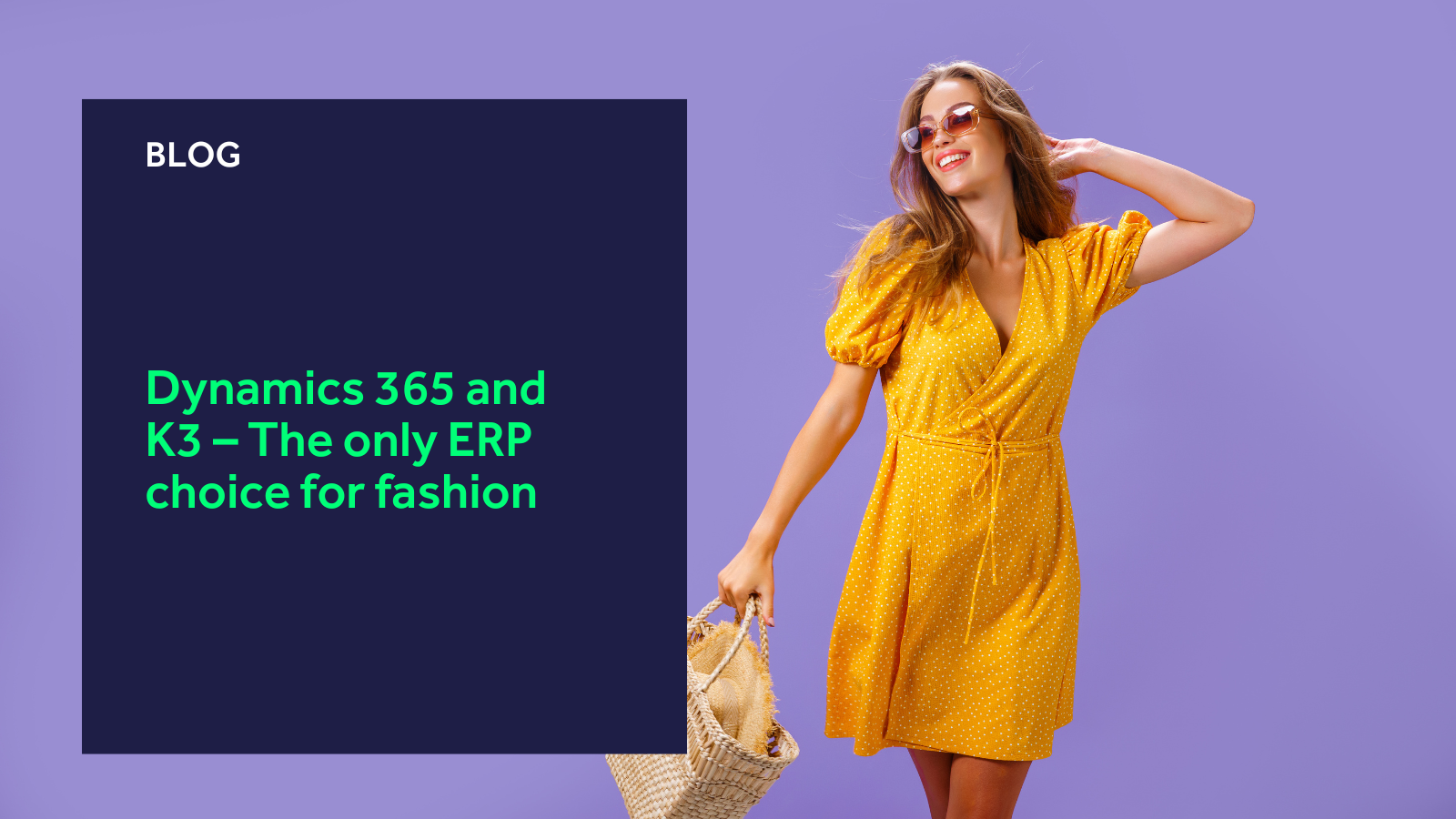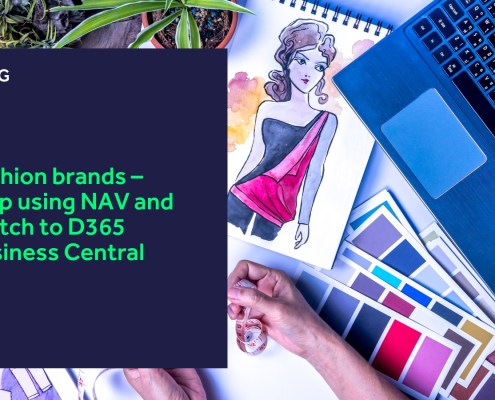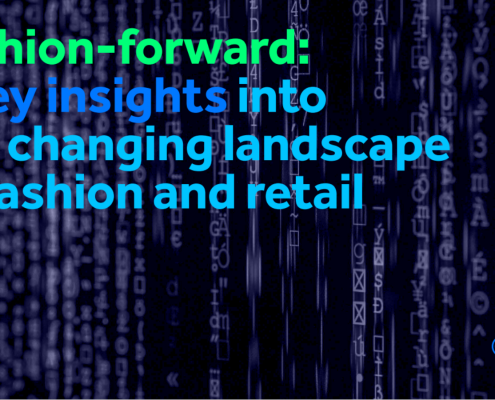Recent years have shown the fashion industry’s greatest vulnerabilities, with supply chain disruptions, economic pressures, and changing consumer demands continuing to pose problems for brands globally.
Such events highlight the importance of adopting a robust fashion-focused ERP to navigate these challenges with confidence and agility.
Yet, so many ERPs available in the market are generic and lack specificity for fashion.
To complicate matters further, SAP, a popular choice for many, will reach end of life by 2030 – forcing brands to find alternatives.
While there are several options available, only one truly stands out above the rest…
Dynamics 365 and K3.
Why Dynamics 365 and K3?
The Microsoft Dynamics 365 (D365) technical infrastructures represent the pinnacle of ERP excellence, offering fashion and apparel brands a multitude of business applications in one location.
D365 is a set of intelligent apps that work together effortlessly, combining ERP and CRM capabilities together in the cloud to support sales, marketing, customer service, field service and HR.
ERPs are mission-critical software for any business, as they automate back-office processes like procurement, inventory management, and assembly while providing real-time visibility across an organisation with a central database.
Microsoft also offers a suite of other systems – like Dataverse, Office 365, Teams, Power BI and Copilot – that seamlessly integrate with the ERP to streamline and accelerate business processes further.
D365 is supported by a plethora of businesses worldwide within the partner network, including leading companies like Mazars, Infosys, KPMG, Avanade, HSO, Hitachi, Nexer, and Xpedition.
Such partners collaborate with Independent Software Vendors (ISVs) who add critical functionality to tailor the ERP to specific industries.
Or, in our case, Global ISVs who fully embed their code into the D365 technical infrastructures to create a truly bespoke and single solution for fashion and apparel.
In fact, K3 is globally endorsed by Microsoft as the go-to solution for fashion due to our long-standing industry expertise and best-in-suite solution portfolio. But that’s not all…
The AI imperative
It’s also worth acknowledging that Microsoft and K3 are leading the charge on the AI imperative, bringing tools to market quickly and driving tangible business change.
Examples of Microsoft’s endeavours include integrating Power BI and Copilot into the D365 environment, empowering companies to automate menial tasks and boost productivity.
D365 users can utilise natural language processing technology to get the system to respond to everyday language queries without requiring special skills or knowledge.
As the only Global Independent Software Vendor for fashion and apparel, we naturally had to follow Microsoft’s lead on AI.
We recently unveiled our AI-enabled product description generator feature and shared details on our upcoming functionality, which will expedite the process of translating labels in K3 Fashion to support chosen languages and accelerate AI usage among fashion and apparel brands.
Suffice to say, with D365 and K3 in place, brands will be successfully positioned to leverage AI continuously in the coming years to accelerate and scale their businesses.
D365 is globally recognised as the best ERP
We understand that it’s all too easy for us – a GISV – to recommend D365 as the best ERP choice for fashion. But we’re not the only ones…
Forbes Advisor recently highlighted D365 as a 5-star ERP choice with the following quote:
“If you’re looking for a reliable ERP, Microsoft Dynamics 365 is worth checking out. It has a variety of applications designed for sales, marketing, customer service, finance, supply chain and HR – neatly packaged in a centralised location.”
Forbes also highlighted D365 Business Central as the best overall ERP system last year.
Likewise, Gartner positioned D365 as a Leader in its Magic Quadrant for Cloud ERP for Product-Centric Enterprises.
Evidently, D365 is globally recognised as the best choice for companies looking to overhaul their business and unify disparate operations.
Brands all over the world have taken note of this sentiment, with companies located across EMEA, North America, and APAC quickly ditching their old ERP providers in favour of the market leader – Microsoft.
Why? Let us tell you!
Reasons to switch to D365 and K3
There are countless reasons to migrate your brand to a cloud-based ERP, however, when weighing your options, D365 and K3 should be high on your consideration set because we represent the best platform for the fashion industry.
Dated ERP solutions lack capacity and cannot scale with a brand as they onboard new staff and customers.
Similarly, brands that have created makeshift solutions by tacking software onto their core ERP cannot benefit from real-time operational visibility due to the disparate nature of their chosen systems.
Many brands also operate with on-premises ERPs, creating innumerable headaches regarding infrastructure management, data trustee responsibilities, application lifecycle management, and disaster recovery scenarios.
By switching to D365, Microsoft handles all of the above, allowing brands to focus on what they do best.
A significant number of enterprise-level brands must start searching for a new ERP provider now to avoid approaching system expiration dates.
Up until this point, we’ve placed significant emphasis on the operational side of D365 and K3, but our combined solution can also double up as a deflationary force against inflationary pressures.
D365 and K3 – a deflationary force in inflationary times
Last year, Microsoft CEO Satya Nadella said something that resonates with us and businesses all over the world:
“The next 10 years are not going to be like the last 10. Digital technology is a deflationary force in an inflationary economy. It’s the only way to navigate the headwinds we’re confronting today. Doing more with less doesn’t mean working harder or longer. That’s not going to scale. But it does mean applying technology to amplify what you’re able to do across an organisation so you can differentiate and build resilience.”
We’ve written about this before, but this is the perfect place to discuss it again.
With cost savings at the forefront of most companies’ minds, solutions like D365 provide best-value suites and best-in-class products to help them achieve more on the cloud.
Through vendor consolidation, decreased travel, increased security, paired with improved productivity and collaboration, all in one premium product, companies can massively rebalance their overheads.
Microsoft’s tech stack facilitates hybrid working, allowing employees to conduct their duties more efficiently from home and save on business travel costs. In the same vein, transitioning to a cloud-based, Software-as-a-Service solution enables companies to trim costs tied to software licenses per employee and the need for on-premise hardware.
As discussed earlier, brands using D365 can effortlessly tap into other Microsoft solutions, like Office 365, Teams and Power Platform, to foster better team collaboration and efficiency. The importance of connected solutions here cannot be understated.
Today, companies require meetings, voice chats, phone calls, scheduling tools, project management solutions, cloud storage, analytics, and automated processes to conduct their business efficiently. Microsoft 365 unifies these solutions into one integrated experience that drastically simplifies work life for employees while offering considerable cost savings, with estimates suggesting that customers can save more than 60% when using Microsoft 365 compared to a patchwork of competitive solutions.
Furthermore, Microsoft estimates that by 2025, 70% of new applications deployed for the enterprise will use low-code or no-code tools – which is where Power Platform plays a pivotal role as the leading business process automation and productivity suite for domain experts. It is widely used in every industry, with 20 million active users.
Microsoft’s unique approach combines robotic process automation, low-code/no-code tools, virtual agents, website building, and business intelligence into a common platform for building end-to-end business solutions, helping to reduce complexity and costs.
Now, picture what you could achieve with K3 on top of that. Our concept-to-consumer solutions support:
- Inventory and Warehouse Management
- Season Management
- Item Management
- Product Lifecycle Management
- Product Data Management
- Order Management
- Manufacturing
- Price and Cost Management
- Sustainability
The key point here is that brands shouldn’t be dissuaded from investing in new technologies like an ERP – even in the face of current cost pressures – since they serve as a deflationary force, reducing costs and enabling scalability.
Customers who have joined the fashion ERP revolution
At K3, we don’t just talk a big game; we walk it too. So, we wouldn’t dare spend this time outlining why we’re the right choice for your brand without citing examples of customers we’ve already helped.
One amazing testimonial comes from Tobias Schuhmacher, Head of IT at Création Gross:
“My advice to other fashion companies considering K3? It’s a smart move. You’re not just buying a solution – you’re joining a collective that’s shaping the future of fashion technology. Together, we are stronger and with K3, we can push the boundaries of what’s possible in our industry.”
Need more? Don’t worry – we’ve captured loads of success stories for your perusal.
Check out the case study section on our resources page now!
 https://www.k3btg.com/wp-content/uploads/2024/03/K3-strengthens-global-market-position-blog-header.png
900
1600
Jordan Heal
https://www.k3btg.com/wp-content/uploads/2022/03/K3_Master_Colour_RGB.svg
Jordan Heal2024-03-11 10:58:242025-02-21 14:37:51K3 Fashion Portfolio strengthens global market position as Tony Bryant spearheads new role
https://www.k3btg.com/wp-content/uploads/2024/03/K3-strengthens-global-market-position-blog-header.png
900
1600
Jordan Heal
https://www.k3btg.com/wp-content/uploads/2022/03/K3_Master_Colour_RGB.svg
Jordan Heal2024-03-11 10:58:242025-02-21 14:37:51K3 Fashion Portfolio strengthens global market position as Tony Bryant spearheads new role

